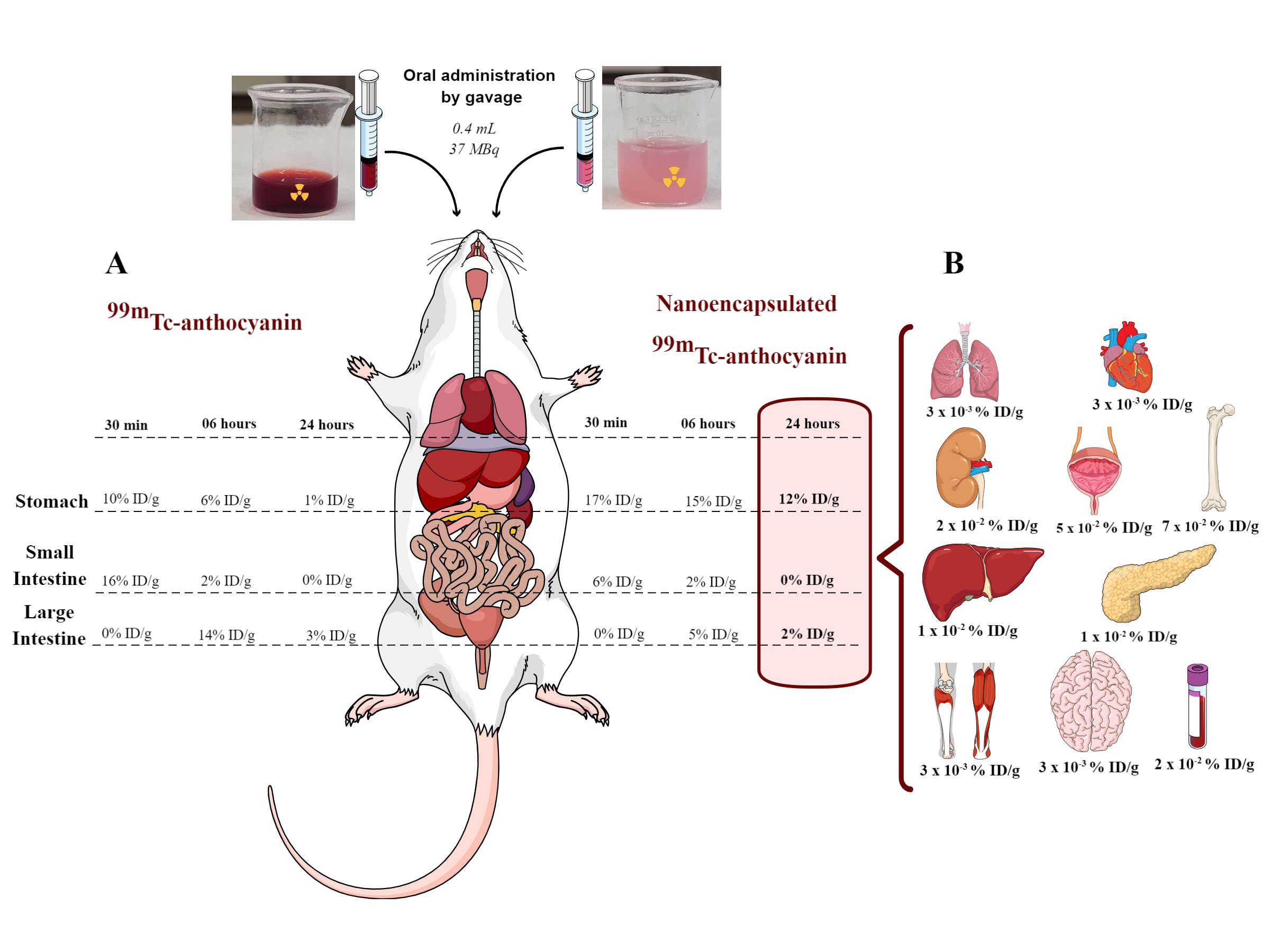


Nanoparticles containing anthocyanin (photo: João Paulo Fabi)
Published on 11/11/2024
By Thais Szegö | Agência FAPESP – An article published in the journal Food Research International describes a scientific study in which nanoencapsulated anthocyanins passed through the digestive system without being degraded, were absorbed efficiently, and reached more organs and tissues than unencapsulated anthocyanins, increasing the benefits to the organism. The study was supported by FAPESP via three projects (13/07914-8, 22/12834-2 and 23/01396-7).
Anthocyanins are pigments found in most species in the plant kingdom and are responsible for the red, purple and blue colors of many flowers, fruits (such as blackberries, strawberries and grapes) and vegetables (such as red cabbage). They are widely studied and valued for their antioxidant, anti-inflammatory and anticancer properties, which help protect against various diseases. They therefore offer significant potential for inclusion in novel pharmaceutical formulations, dietary supplements and food products, both for enrichment and as natural colorants.
However, they are highly sensitive to environmental conditions such as pH, temperature, light and oxygen, and deteriorate rapidly in the gastrointestinal tract owing to the action of digestive enzymes and gut microbiota, so that their bioavailability is limited. “Several previous studies showed that when anthocyanins are taken orally, a very small amount is absorbed and stays in the organism only for a very short time,” said Thiécla K. O. Rosales, first author of the article and a researcher in the Department of Food and Experimental Nutrition at the University of São Paulo’s School of Pharmaceutical Sciences (FCF-USP) in Brazil.
For this reason, the study focused on evaluating the use of nanotechnology to improve the bioavailability of anthocyanins and assure their delivery to targeted organs or tissues.
“Thanks to collective efforts by researchers at FCF-USP and collaboration by colleagues at other institutions in Brazil and abroad, we discovered that encapsulation of anthocyanins in nanometric particles coated with pectin [a polysaccharide extracted from citrus peel] and lysozyme [an enzyme isolated from egg whites] forms a mesh that protects the compound,” said João Paulo Fabi, last author of the article and a professor at FCF-USP.

Nanoparticles imaged by scanning electron microscope (photo: João Paulo Fabi)
The researchers first extracted and purified anthocyanin from blackberries. They then developed a methodology to radiolabel the anthocyanin via a stable chemical reaction. This part of the project was conducted in partnership with scientists at the Nuclear and Energy Research Institute (IPEN, an arm of the Brazilian government). Radiolabeling involves replacing carbon atoms with carbon isotopes so that the molecule of interest can be more easily tracked with imaging equipment.
Next, the anthocyanin was encapsulated and orally administered to mice. The researchers used computed tomography to analyze the biodistribution and bioavailability of the nanoencapsulated anthocyanin in the mice compared with free anthocyanin, including release from the gastrointestinal tract into the bloodstream and delivery to specific tissues after absorption.
The results showed that the nanostructures with encapsulated anthocyanin moved slowly through the gastrointestinal tract and remained in the organism for a significant time. Absorption was efficient and targeted tissues were reached. In the case of unencapsulated anthocyanin, absorption was insufficient, biodistribution was limited, time in the organism was relatively short, and excretion was rapid.
“We also used computerized models to help us understand how the substance present in the nanostructures was released from the gastrointestinal tract in response to physiological stimuli,” Rosales said.

CT scan of mice showing free anthocyanin (left) and nanoencapsulated anthocyanin (right) /credit: João Paulo Fabi
In vitro cellular trials were conducted to verify the safety of the nanoparticles. The results were satisfactory and confirmed by in vivo trials involving mice.
The study produced groundbreaking and highly promising findings that serve as a sound basis for further research in the area, although important steps still need to be taken before this nanoformulation can be applied in clinical practice. “We’re currently conducting new in vitro trials to verify the efficacy of encapsulated anthocyanin in certain situations. In addition, we’re exploring its biological effects on a specific disease,” Fabi said.
These forthcoming trials will be crucial to validate the nanostructures’ potential when orally administered, and for the development of supplements by the pharmaceutical and food industries, guaranteeing that bioactive compounds with therapeutic potential can be delivered efficiently, effectively and safely.
“We continue to contribute to this research field while developing the technology and expect to be able to publish new results soon. We’re also studying the possibility of industrial-scale production,” Fabi said.
The article “A study of the oral bioavailability and biodistribution of nanoencapsulation-driven radiolabeled anthocyanins” is at: www.sciencedirect.com/science/article/abs/pii/S0963996924011955.

Summary of biodistribution experiment data: the higher the injected dose per gram of tissue (% ID/g), the larger the amount of the compound detected in the animals’ organs (credit: João Paulo Fabi)
Source: https://agencia.fapesp.br/53276